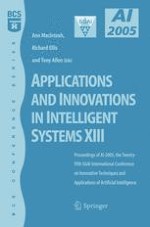The papers in this volume are the refereed application papers presented at AI-2005, the Twenty-fifth SGAI International Conference on Innovative Techniques and Applications of Artificial Intelligence, held in Cambridge in December 2005.
The papers present new and innovative developments in the field, divided into sections on Synthesis and Prediction, Scheduling and Search, Diagnosis and Monitoring, Classification and Design, and Analysis and Evaluation.
This is the thirteenth volume in the Applications and Innovations series. The series serves as a key reference on the use of AI Technology to enable organisations to solve complex problems and gain significant business benefits.
The Technical Stream papers are published as a companion volume under the title Research and Development in Intelligent Systems XXII.
